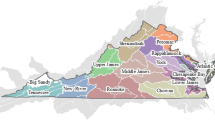Abstract
Environmental credit markets have been established as a mechanism to offset wetland impacts in some jurisdictions with a well-developed regulatory program. In the USA, for example, wetland mitigation banking contemplates that a private entity may engage in a wetland restoration project, thereby producing wetland credits; these credits can then be sold to a developer, which will use them to satisfy its legal obligations to provide offsets. Similar environmental markets or offset regimes have been implemented or are in development with respect to endangered species habitat, water quality, and carbon sequestration. Accordingly, a single restoration project may have the potential to produce multiple types of environmental credits. These credits, arising from a spatially overlapping area, are often referred to as stacked credits. Although a properly designed credit stacking regime could induce greater investment in conservation actions, significant ecological concerns remain.
Similar content being viewed by others
References
Cooley D, Olander L. Stacking ecosystem services payments: risks and solutions. Environ Law Report. 2012;42(2):10150–65.
Fox J, Gardner R, Maki T. Stacking opportunities and risks in environmental credit markets. Environ Law Report. 2011;41(2):10121–5.
Gardner R. Lawyers, swamps, and money: US wetland law, policy, and politics. Washington, DC: Island Press; 2011.
Gardner R, Fox J. The egal status of environmental credit stacking. Ecol Law Q. 2013;40(4):713–57.
Gillenwater M. What is additionality? Part 3: implications for stacking and unbundling. Discussion Paper No. 003, Greenhouse Gas Management Institute, Silver Spring. 2012.
Robertson M, Bendor TK, Lave R, Riggsbee A, Ruhl JB, Doyle M. Stacking ecosystem services. Front Ecol Environ. 2014. doi:10.1890/110292.
Author information
Authors and Affiliations
Corresponding author
Editor information
Editors and Affiliations
Rights and permissions
Copyright information
© 2018 Springer Science+Business Media B.V., part of Springer Nature
About this entry
Cite this entry
Gardner, R.C. (2018). Ecosystem Credit and Payment Stacking: Overview. In: Finlayson, C.M., et al. The Wetland Book. Springer, Dordrecht. https://doi.org/10.1007/978-90-481-9659-3_180
Download citation
DOI: https://doi.org/10.1007/978-90-481-9659-3_180
Published:
Publisher Name: Springer, Dordrecht
Print ISBN: 978-90-481-3493-9
Online ISBN: 978-90-481-9659-3
eBook Packages: Biomedical and Life SciencesReference Module Biomedical and Life Sciences




